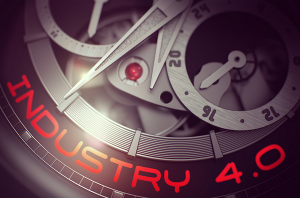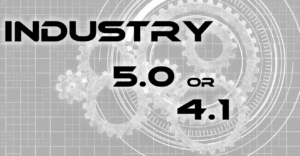Industry 4.0 is the popular name given to the rise of “smart” factories and what some analysts believe is the fourth Industrial Revolution. Revolutions are characterized by radical and pervasive change. Many analysts believe enough new technology has emerged to create that kind of industrial change. Chris Pope, Vice President for Innovation at ServiceNow, defines Industry 4.0 as “a new age of industrial man and machines.”[1] He adds, “[The term] describes a seismic shift in infrastructure, operations and processes that is characterized by the arrival of cyber-physical systems and the layers of software-driven intelligent automation that they run on.” Most people are familiar with the emerging technologies driving the revolution — artificial intelligence (AI), the Internet of Things (IoT), robotics, and 3D printing — but maybe they are not familiar all the directions these technologies can take industry.
Technologies driving the next Industrial Revolution
Technologies generally emerge then drive trends. Trends often refer to how technologies are being or will used. As noted above, the principal technologies driving Industry 4.0 are artificial intelligence (AI), the Internet of Things (IoT), robotics, and 3D printing.
Artificial Intelligence and Machine Learning. We live in the Digital Age and most business consultants insist businesses, including manufacturers, need to transform into digital enterprises in order succeed. The Digital Age is defined by data; which means digital enterprises need to learn how to leverage data to transform. That’s where AI, cognitive computing, and machine learning come into play. Louis Columbus (@LouisColumbus), a Principal at IQMS, asserts, “Machine learning algorithms, applications, and platforms are helping manufacturers find new business models, fine-tune product quality, and optimize manufacturing operations to the shop floor level.”[2] I would argue cognitive technologies are going to play a significant role in every digital enterprise and will prove useful in improving almost every aspect of a business. Jeff Hojlo (@jeffhojlo), program director for Product Innovation Strategies at IDC, predicts, “By the end of 2021, 25% of global manufacturers will apply machine learning to data across product development, supply chain, manufacturing, and service for more rapid decision support, improved quality, differentiated products, and innovative business models.”[3]
Internet of Things. The editorial staff at the Boss Magazine observes, “The Industry 4.0 revolution is data driven [by] and akin to the Internet of Things. In 2015, McKinsey identified four major disruptions that drive Industry 4.0. Chief among them is the unprecedented amount of data that is being collected, processed, and analyzed for business intelligence.”[4] The IoT is actually an ecosystem consisting of sensors on one end, cognitive analysis on the other end with the two ends connected by the IoT. The BOSS staff adds, “As cloud-based platforms, data analytics, artificial intelligence, and intelligent automation revolutionize markets, industries, and societal and economic expectations, few businesses can afford to function in a linear fashion.” Pope adds, “By connecting machines, workflows and systems, businesses are creating intelligent networks along their entire value chain and supply chain that can control and manage each other autonomously.”
Additive Manufacturing (aka 3D Printing). Additive manufacturing is no longer a novelty. Developers are finding ways to print with new materials and manufacturers are constantly finding new ways to use 3D printing technology. One of the benefits of additive manufacturing is that new forms (i.e., structures) can be created that were never before possible. A second benefit is that supply lines can be reduced or eliminated as parts are made on site or near where customers are located.
Robotics and Automation. Pope notes, “One of our first challenges is in accepting that robots and so-called Robotic Process Automation (RPA) have arrived for real. We are now learning the part that these machines and software systems can play in the way all organizations now refine and finesse their business models. The opportunities here are both massive and diverse, which means that this new realignment of industry will take some time to fully engineer and fully exploit for positive gain.” The BOSS staff believes warehouses are where the greatest change might take place. They explain, “From drones used to count inventory and robots designed to work with humans to exoskeletons used to enhance human performance and augmented reality, the IoT is transforming traditional warehousing and materials handling into a faster, sleeker, more dynamic version of itself.”
Trends defining the next Industrial Revolution
The convergence of new technologies allows enterprises to do business in entirely new ways. According to PwC, they include:[5]
- The full digitization of a company’s operations, including the vertical integration of processes across the entire organization, and the horizontal integration across the entire value chain.
- The digitization of product and service offerings by adding smart sensors, communication devices, and data analytics tools to create smart digital products and smart services.
- Digital business models, including integrated digital solutions, data-driven services, platforms and ecosystems, and mass customization, where every product and service can be created as a batch of one.
Pope asserts these new technologies provide “five layers of intelligent automation.” They are:
- Self-optimization. “This is the ability for devices, applications and higher-level IT systems to adapt to changing conditions brought about by changes in data volume, velocity and (in some cases) variety. In software engineering terms this means we have a responsibility to build from ground zero with an appreciation for the need to architect upwards and outwards. If our IT stack is built with an inherent dynamism, then self-optimization can be brought to bear at a wider and higher level for the long term.”
- Self-configuration. “Devices can be powered up with enough knowledge of their surrounding network and wider environment to configure themselves automatically (i.e., intelligently). This is a question of building software with the ability to a) know what it knows at the point of deployment and b) know it may not initially know everything it needs to know at a future point in time.”
- Self-management. “Self-management is characterized by actions that are capable of addressing faults, errors or performance issues.”
- Cognition. “This is not cognition in the sense of self-aware sentient intelligent machines, this is simply the point at which we start to give our machines a digital identity and reference so that they can learn from events (these being quite literally ‘data events’) that happen across the network. When our machines start to realize that there is a wider network of activity out there (because we define it and describe it and tell the machines that it is there) then they start to gain a degree of cognition about the universe around them.”
- Intelligent support. “When all the above factors start to coalesce and function in seamless harmony (or at least in some form of occasionally syncopated rhythm), then we can start to build upwards and provide a level of support that is intelligently empowered by all the automation layers that lie beneath it.”
Other technologies, like blockchain and augmented reality, may have an impact on Industry 4.0, but the technologies mentioned above are likely to have the greatest impact.
Summary
Pope concludes, “Creating, developing, engineering and ultimately powering up an Industry 4.0 business is never an overnight process. But even if we accept this truth, getting an entire enterprise (or small- to medium-sized business) to start operating as a next-generation operation should be a Zen-like operation—one brick, one data stream, one workload, one service and one application at a time.” Will effort prove worth it? The BOSS staff reports, “Companies that are embracing the relentless innovation that Industry 4.0 demands are already reaping the benefits of their digital supply chains. A recent Deloitte survey of over 400 manufacturing and retail executives revealed that organizations with innovative supply chain capabilities show radically better performance on revenue growth when compared to industry averages.” PwC analysts add, “Don’t buy the hype. Buy the reality. Industry 4.0 will be a huge boon to companies that fully understand what it means for how they do business. Change of this nature will transcend your company’s boundaries — and probably the national boundaries of the countries where you do business.”
Footnotes
[1] Chris Pope, “From theory to reality – powering up Industry 4.0,” Diginomica, 29 November 2017.
[2] Louis Columbus, “10 Ways Machine Learning Is Revolutionizing Manufacturing In 2018,” Forbes, 11 March 2018.
[3] Hailey Lynne McKeefry, “10 Trends Shaping Manufacturing in the Next Five Years,” EBN, 11 January 2018.
[4] Staff, “Industry 4.0: The Era of Smart Factories,” The BOSS Magazine, December 2017.
[5] Irving Wladawsky-Berger, “Digital Disruptors of the World Unite: Interpreting the Fourth Industrial Revolution,” The Wall Street Journal, 15 December 2018.





